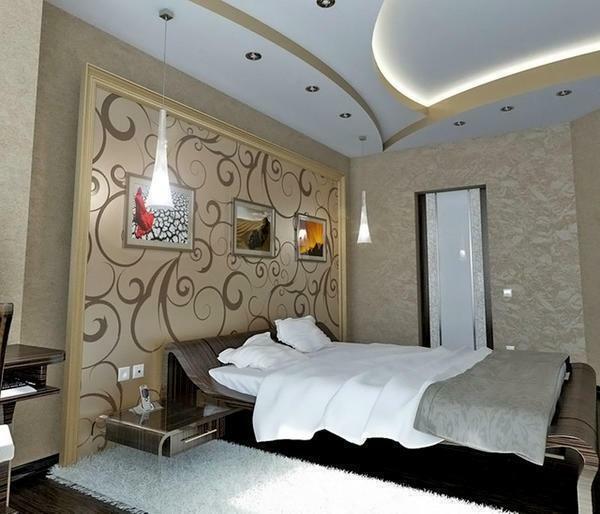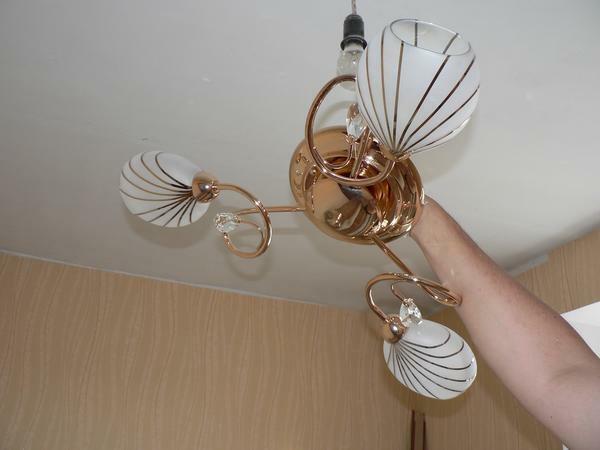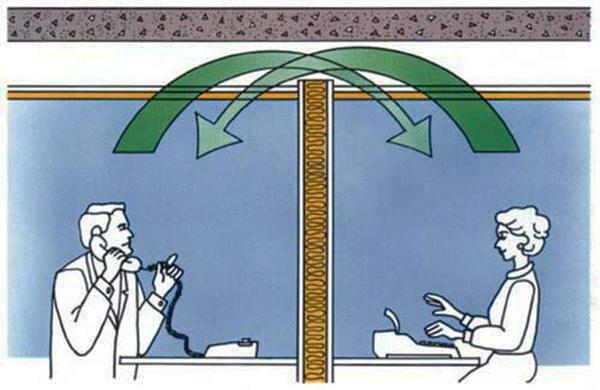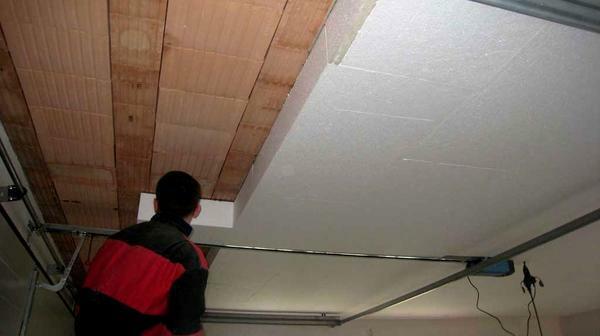 Thermal insulation of the ceiling will make the house warm and comfortable, regardless of the weather conditions. When the temperature of the living room falls outside the normal range, the question arises about the insulation. If the floor and walls are in order, to insulate the ceiling is a logical decision. And here, not only functional, but also decorative features of the material become important. Most often, insulation can be done independently, it is worth to understand all the subtleties of the process and correctly apply the necessary instructions.
Thermal insulation of the ceiling will make the house warm and comfortable, regardless of the weather conditions. When the temperature of the living room falls outside the normal range, the question arises about the insulation. If the floor and walls are in order, to insulate the ceiling is a logical decision. And here, not only functional, but also decorative features of the material become important. Most often, insulation can be done independently, it is worth to understand all the subtleties of the process and correctly apply the necessary instructions.
-
-
- The most responsible choice: how to insulate the modern ceiling
- How to insulate the cold ceiling: the main technologies and types of structures
- How to properly insulate the ceiling under a cold roof
- The easiest ways to insulate a thin ceiling with your own hands
- Insulation of a ceiling with mineral wool( video)
-
Is it necessary to insulate the ceiling: the most common cases of
The law of conversion explains why it is through the ceiling that its greatest loss of heat occurs during its non-idealness, which in winter time reaches 60%.
You can pre-calculate the heat loss of walls, floor and ceiling to see if there is a clear heat leak in the house.
In which cases it is necessary to insulate the ceiling:
- In a private room, when there is an independent construction of a house or cottage, and the ceiling is represented by bare ceiling beams. This is a great opportunity to consider all the moments of warming carefully.
- In a dwelling, in the country, if during cold seasons in the house it's cold to be.
- Insulate the ceiling with a cold roof, with an attic, massander or any other second level.
- In an apartment of a multi-storey building, if it is located on the top floor.
- In multi-storey buildings, if there is a need to insulate inter-floor ceilings( this is required in cases where overlapping with voids).
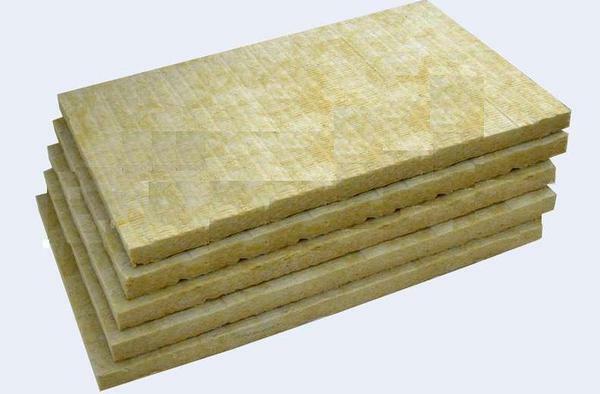 Mineral wool is an environmentally friendly, non-flammable and relatively inexpensive material for insulation of the ceiling in the house.
Mineral wool is an environmentally friendly, non-flammable and relatively inexpensive material for insulation of the ceiling in the house.
For soundproofing, the thickness of the insulation is more important to protect the room from sounds from the next room. The ceiling is lined with a ceiling lining, and the floor is floored.
Depending on the reason for the insulation of the ceiling, a suitable heater construction, the materials and installation methods are selected.
High-quality insulated ceiling: savings possibilities
The insulated ceiling provides a comfortable temperature regime, allows to save on heating, significantly reduces the humidity of the ceiling space and, as a result, avoids fungal and mold deposits.
When the ceiling is insulated, the following principles must be followed:
- Maintain the optimum steam circulation mode;
- Prevent the possibility that condensate may get into the heater.
- Use fire-resistant and environmentally friendly materials.
Repair of the ceiling is worth spending in the warm season. BecauseThere are temperature limits when drying the used materials.
The most responsible choice: how to insulate the modern ceiling
There is a wide variety of materials that insulate the ceiling.
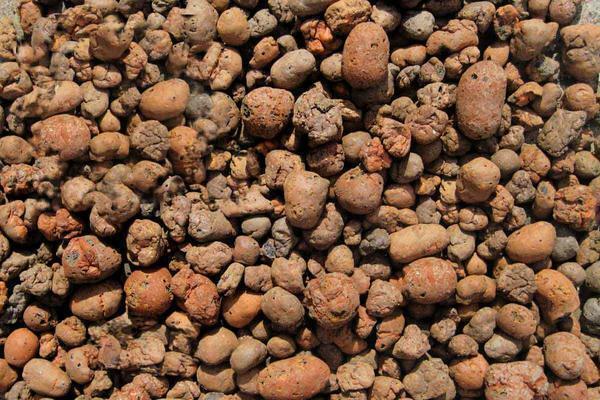 Expanded claydite is an affordable, natural material that will easily provide high-quality thermal insulation of the ceiling space
Expanded claydite is an affordable, natural material that will easily provide high-quality thermal insulation of the ceiling space
Used to be heated with sawdust and dry grass. Modern materials are more effective and have significant advantages. It is necessary to study the characteristics of the most popular of them and make their choice in favor of those suitable for individual internal and external conditions of the premises.
Insulation can be made:
- Polyfoam;
- Mineral wool;
- Penoizolom;
- Polyurethane;
- Foil insulated;
- Ecowool;
- Expanded polystyrene;
- with expanded clay;
- Polyplex.
It is better to use natural materials for warming a house in a wood. Such as ecowool. But, for example, the attic is effectively insulated with sawdust interspersed with clay.
The use of these or other materials depends on the characteristics of the room space, qualitative preferences and budget constraints. If it is important, for example, to do the work as quickly as possible, it is worth using foam polystyrene ceilings.
How to insulate a cold ceiling: basic technologies and types of structures
In addition to the huge number of insulation options, there is a choice of mounting method.
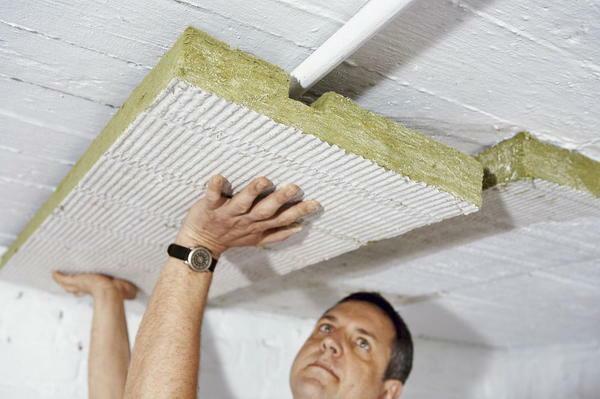 The thermal insulation of the ceiling from the inside will allow to extend the service life of the insulation, as it will not be affected by the destructive effect of the temperature differences
The thermal insulation of the ceiling from the inside will allow to extend the service life of the insulation, as it will not be affected by the destructive effect of the temperature differences
There are two main methods:
- Insulate the ceiling from the outside;
- Insulate the ceiling from the inside.
Each of the methods is suitable for certain materials, has its advantages and disadvantages, it is used in certain climatic and technical conditions. Insulation properties of vapor permeability or vapor tightness are inherent. The former are used to insulate the room inside, and the second - outside.
The internal insulation construction consists of an insulating layer that is attached to the frame and the cladding, which performs a decorative role.
Drawbacks of ceiling insulation from the inside:
- The ceiling loses in height to half a meter;
- After decorating the ceiling there will be no direct access to the heater;
- Certain heaters are capable of releasing harmful substances;
- If the room is residential, you need to clear the room from the furniture;
- Some heaters are incompatible with spotlights.(Mineral insulation prevents heat sink lamps, which can lead to their frequent burnout);
- In case of internal work, the waterproofing can be damaged.(Moisture can get into the heater from evaporation in the room).
There is a special technology that allows to avoid problems of vapor barrier during internal insulation of the ceiling. The 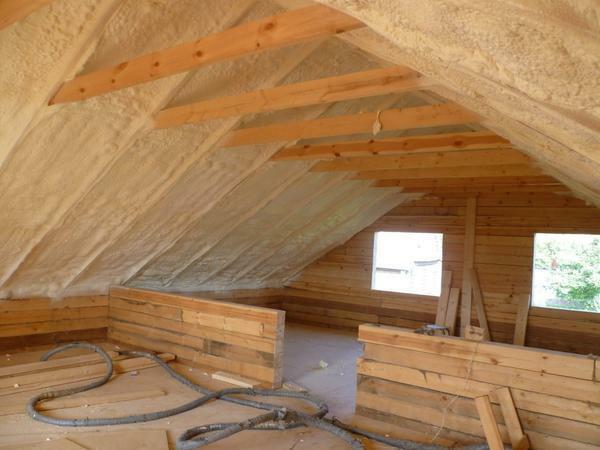
External insulation is possible if the house has an attic. There is no easier way of warming, than to lay a warmth-keeping structure on the attic surface. In multi-storey houses, the floor of the attic is often hung with wires, which excludes such a method of insulation for apartments.
How to insulate a ceiling under a cold roof
The Internet presents a huge amount of video on the insulation of the ceiling surface with your own hands. However, before you begin to work, it is worth studying this topic in more detail.
General tips and nuances for thermal insulation of the overhead coating:
- Between the heater and the ceiling it is necessary to lay the vapor barrier film so that the insulation is not soaked from evaporation;
- Do not fasten the vapor barrier film on either side of the insulation to prevent moisture from closing in it;
- Joint the vapor barrier with the wall by means of a special hermetic tape, for example, butyl rubber;
- If necessary, lay different insulation in several layers, they should be arranged according to the degree of vapor permeability: from smaller to larger, from bottom to top;
- When choosing the material, it is necessary to calculate that the dew point does not exceed the limits of the possibility of the insulation to prevent the formation of condensation.
By the same principles, the ceiling of the cellar and the ceiling of the mezzanine - the second floor - is insulated.
The most qualitative and optimal insulation is basalt mineral wool. Products of mineral wool are produced in the form of rolls and plates.
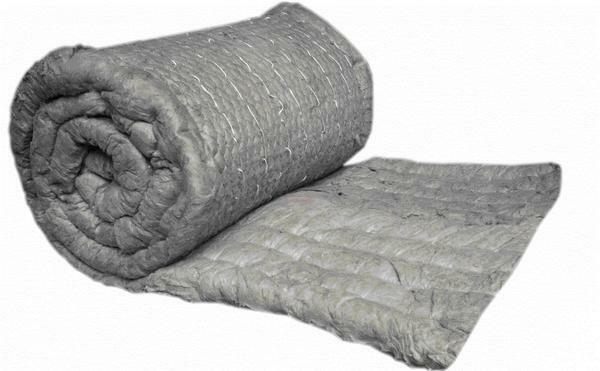 Basalt wool is a versatile fiber material that is used for indoor and outdoor thermal insulation of the room.
Basalt wool is a versatile fiber material that is used for indoor and outdoor thermal insulation of the room.
Basalt wool is famous for:
- Low thermal conductivity, resulting in increased thermal insulation;
- Guaranteed service life up to 50 years;
- High density( the higher the density, the more expensive the heater);
- Elasticity;
- Temperature resistance up to 900 degrees Celsius;
- Sound insulation.
The popular manufacturer of this material is the Rockwool company.
It is possible to warm the "rockwool" not only with a ceiling covering, for example, a sloped roof and even a bathroom, but also a floor, a bath, a floor on the veranda, walls on any extension to the house, a rough floor surface and other non-standard surfaces.
The easiest ways to insulate a thin ceiling with your own hands
The type of construction and the graduality of the work depends on the chosen method of surface insulation. The general scheme of the insulated ceiling will eventually consist of: floor beams, insulation, vapor barrier film, crate, gypsum board. But the sequence of works will be different.
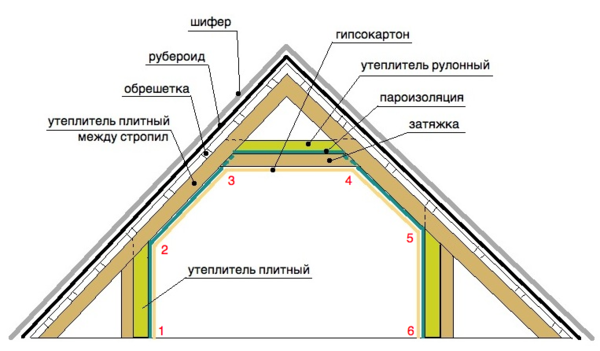 Layout of different types of insulation
Layout of different types of insulation
Stages of work on the insulation of the ceiling from the inside:
- Install and fasten the wooden, metal or plastic profiles;
- Fill the space between the carcass with a heater. For fixing, you can use an adhesive or dowel;
- Lay the layers of the vapor barrier film overlapping each other;
- Next, we coat the surface with plasterboard.
Stages of work on the insulation of the ceiling from the outside:
- Prepare the surface, mark with foam mounting slot;
- Laying vapor barrier;
- Lay the insulation layers.
The insulation layer can be left open in case of external insulation, but in this case it is impossible to walk on the surface. If you need to leave the surface of the attic functional, you can mount the floor of a tree.
Insulation of the ceiling with mineral wool( video)
The warming of the ceiling most often completely solves the problem of a cold house. Therefore, the cost of repair and installation of the system should pay off in a short period. In addition, in addition to warming, the issue of moisture and fungal plaque is solved.
